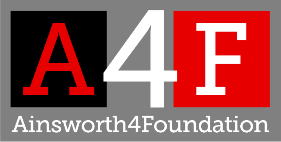
I earned my Bachelors Degree in Education and Psychology in 1994. Instead of a career in teaching or psychology after college, I was more interested in private business ventures, all of which were in the field of health education. After 6 years as an entrepreneur, I returned to school in 2001 for a Masters Degree in Counseling. Unfortunately, I was unable to complete my degree after I developed a debilitating case of cervical dystonia. It turned my world upside down, altering the course of my life in ways I never imagined possible.
In the very beginning before getting diagnosed, I noticed that my head would slightly lean to the right when I was sitting, with some restricted turning to the left. Thinking it was a musculoskeletal problem, I sought out chiropractic care, where I received neck adjustments and extension traction. After several months, the pain worsened and my neck muscles were pulling my head to the right more forcefully. I then saw another chiropractor, an MD, a massage therapist, and physical therapist, none of whom helped. I ended up seeing close to 15 different doctors. Utterly frustrated, I began researching the internet like crazy, where I discovered Cervical Dystonia. I then went to a movement disorder neurologist who made the official diagnosis.
By the time I got an accurate diagnosis, I was in such extreme pain and disfigurement that I was pretty much unable to do anything on my own. My head and neck were locked towards my right shoulder and significantly worsened with any type of movement because of the intense muscle contractions.
As a result of my pain and disability, I had to drop out of graduate school, quit my job, and move in with my parents because I had become disabled to the point that I could not function without their help. This was very difficult for me to cope with, having previously been a competitive athlete in several sports for years, a full time student, and an active entrepreneur. The transition from an active, independent person to a disabled person almost completely dependent on others was devastating. I was only 30 years old at the time.
For about 6-8 months, I literally spent my day as follows: wake up, eat breakfast, lie on the floor, eat lunch, lie on the floor, eat dinner, lie on the floor, and then go to bed and try to fall asleep. In fact, I also ate lying on the floor. I spent nearly 16 hours a day on my floor in a fetal position in tears half of the time because the pain was too much for me to sit or stand more than 10 minutes. I became almost totally dependent on the help of others, as I was unable to shop, cook, clean, do laundry, etc. Over time, I also developed scoliosis due to my body maintaining a twisted posture for so long.
In February 2002, I attended the ST Recovery Clinic in Santa Fe, New Mexico (www.stclinic.com). Applying the information I learned at the clinic (a very specific exercise, stretching, and massage program) along with taking medications, I began showing some minor improvement about 4-6 months later. Unfortunately, being the impatient person I am, I was not improving at the rate I had hoped and was frustrated that I could not move on with my life. As a result of my anger and frustration, I essentially gave up on the program and chose to wallow in misery.
In January 2003, I received Botox injections. It did very little to nothing to reduce my pain or contractions. I tried several more times again in the following 10 years with no success. Additional treatments included chiropractic (just for my back this time), acupuncture, and physical therapy, none of which improved my condition. My frustration and misery skyrocketed. I fell into a pit of depression, became almost completely homebound, began having severe panic attacks, drank alcohol to help reduce the pain and spasms, and had an awful diet.
Because of my disability and depression, I was very sedentary and no longer cared for my body the way I knew how. I began drinking a lot and eating large quantities of high fat foods throughout the day and night. I went from an athletic 190 pounds in 2001 to a morbidly obese 340 pounds in 2006.
While I never did anything to change my bad habits, every single day I told myself that the next day would be the day I would make the change and get back in shape. This went on for 5 years and I just became more depressed, disfigured, and overweight.
In December 2006, I caught a stomach virus and was sick for almost 2 weeks. During that time when I couldn’t eat or drink, I was alone with my thoughts in bed all day. I knew when I recovered from the stomach problem that I had to make a decision: go back to the unhealthy lifestyle that was slowly killing me or try to take back control of my health.
I decided to dedicate my entire life to being as healthy as possible. I completely changed my diet and walked every day. I started by walking about 1/4 mile a day and slowly increased it to about 2 miles twice a day. I lost 150 pounds in less than a year and with full dedication to the ST Clinic program, I saw about a 75% improvement in my dystonia.
Over the years I have also incorporated massage, acupuncture, nutrition, stress management, medications, topical lotions, trigger point tools, ice, heat, meditation, breathing and mindfulness activities, music, dancing, strength training, sleep and plenty of rest during the day… and on the emotional side – healthy relationships, stress management, not being so hard on myself, saying “no” without guilt, confronting and overcoming anxiety and depression, finding meaningful activities, taking on projects to feel a sense of accomplishment, writing, hobbies, relationships that make me laugh, but are also deeper than surface level, and most importantly, how I think about things and process life events. For me it has become a lifestyle where there is a synergistic effect and my days are no longer dictated by my symptoms.
Life is certainly much better, as are my symptoms, but I am not cured. I still have problems with my neck and back that prevent me from doing certain activities, and it takes a lot of work every day to manage the best I can. However, it is night and day compared to the horror I once lived. I used to be someone who essentially lived on a floor in writhing pain feeling completely worthless and depressed, unemployed, morbidly obese, and totally dependent on the help of others. I didn’t want to wake up in the morning because I didn’t want to face the constant physical and mental pain. I am now at a healthy weight and in much better control of my dystonia to where I can live a more normal life with passion and excitement.
In 2012, I became certified as a professional life coach. Utilizing this education and the tools I learned from my experience living with dystonia, I now dedicate myself to helping others who are experiencing their own health challenges. Empowering others improve their quality of life is a great passion of mine.
In 2015, I published my first book, Diagnosis Dystonia: Navigating the Journey. This combination autobiography, self-help, education book provides treatment options, coping strategies, skills for daily living, and tools for dealing with the physical and mental challenges of life with a chronic health condition. It is available at www.diagnosisdystonia.com.
In 2021, I published my second book, Beyond Pain and Suffering: Adapting to Adversity and Life Challenges. This book provides strategies for managing difficulties we are experiencing in the moment, and for the unpredictable stressors in life, such as financial distress, trauma, pain, diseases and other illnesses, relationship issues, fear, depression, anxiety, and grief, to name just a few. This book offers tools for how to cope and manage these situations and move beyond the pain and suffering they bring, be it physical, emotional, or both. It teaches how to not make the most difficult parts of our life the most significant part of our life. It is available at www.BeyondPainandSuffering.com.
I have been faced with major challenges throughout my adult life. What helps me jump over hurdles is my belief that everything has a solution. There is nothing that can’t be altered to improve our quality of life. Obstacles provide us with opportunities for us to become better people and every day I am grateful for the chance to help myself and others achieve their personal best.



